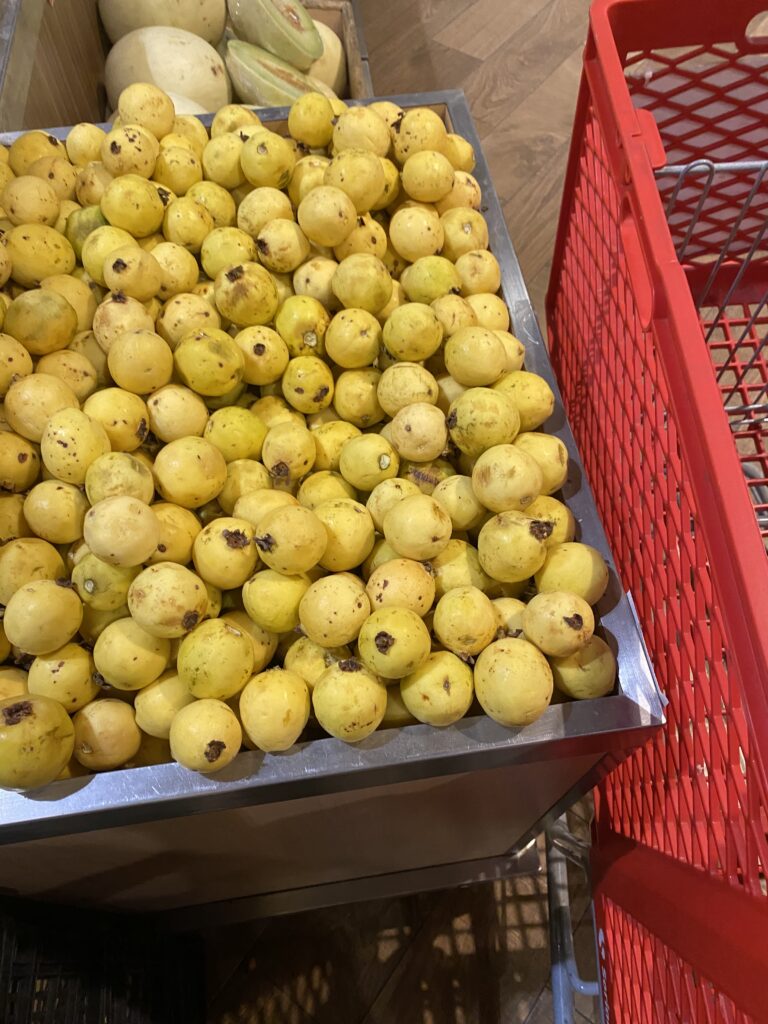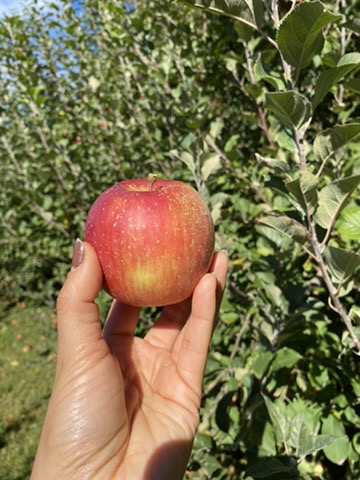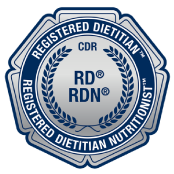Let’s break this down.
The importance of fiber is sometimes underrated or just overshadowed by “eat more fruits and vegetables” which is not a wrong thing to say but it can leave people wondering how.
Fruits and vegetables have fiber. Some have more than others.
Think skins or the more times you have to chew to break down the fruit or veggie that usually means there is fiber in that food.

Guava.
There are two types of fiber.
Soluble: This type of fiber forms a gel like substance and sticks to our GI tract. This is the one recommended to include especially if you struggle with high cholesterol. Since it sticks to the GI tract and takes a longer time to digest it also binds to any cholesterol as it makes its way to your colon so you can poop it out.
Think fibrous vegetables like asparagus, broccoli, brussels sprouts, green beans. Fruits such as kiwis with the skin, guava with skin and seeds, and apples with the skin, are all recommended to incorporate into your diet because of their higher soluble.
Insoluble: This type does not form anything, it simply goes straight through. This is a good thing as it helps form your poop and may help keep you regular. As in getting rid of the waste your body doesn’t need regularly.
Now let’s get into facts about the United States of America and fiber.

Currently, there is a fiber gap. The Fiber gap is the difference in the recommended amount of fiber and how much US Americans are actually eating.
Based on the data from the USDA, US Americans average 8.1g for each 1,000 in 2017-2018.
The recommendations from the Dietary Guidelines for Americans for adults is 22-34 grams of fiber per day.
This is a public health concern because fiber intake doesn’t just benefit folks who manage high cholesterol which can affect heart health. Fiber can also help reduce other chronic diseases such as diabetes. When fiber is eaten with other macronutrients such as proteins or even a simple carbohydrate it can decrease the rate glucose enters your bloodstream. This helps avoid sugar spikes which can lead to insulin resistance.
More benefits.
Fiber may reduce the risk of colon cancer. A cancer that has been increasing in the US.
So how can we increase fiber intake and decrease the gap? We start one meal a day.
I have made a guide to help you increase fiber intake.
Please sign up here to receive your guide.
Sources for this blog.

